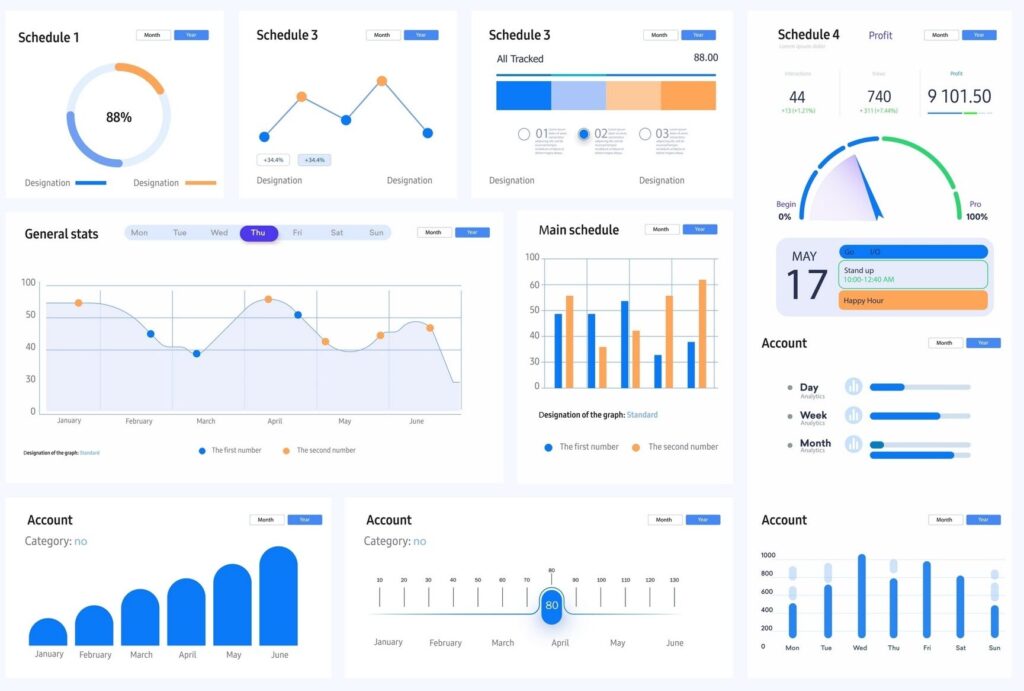Clear visibility of business operations through business activity monitoring (BAM) improves informed decision-making and profitability. By adopting such in-depth monitoring, organizations can leverage real-time data on reporting and analytics to gain valuable insights for success.
What is Business Activity Monitoring?
Before delving into BAM, it’s essential to understand what a business process is and why it needs to be monitored. A business process typically involves a sequence of steps aimed at achieving specific goals or objectives within an organization. The quantitative and qualitative information collected and analyzed to assess the efficiency and overall performance of a business process or activity is called performance data.

By monitoring and analyzing performance data with the help of BAM tools, businesses can identify areas for improvement, optimize processes, and enhance overall performance. This data is often gathered from various sources, including transactional systems, databases, application logs, and system monitors, and is presented in dashboards using charts and tabular reports for easy interpretation and action.
Reports based on BAM leverage vast amounts of inputs from the process database. The data is analyzed to identify and categorize factors relevant to specific concerns, and the results are displayed in a straightforward, user-friendly interface.
Why do we need a Business Activity Monitoring Tool?
A Business Activity Monitoring tool becomes invaluable by displaying key performance indicators on real-time dashboards, helping to address problems swiftly and restructure processes to capitalize on emerging opportunities. The flexibility of customizable dashboards and reporting options allows businesses to focus on the metrics that matter most to their specific needs. Here are the factors that make these tools essential:
Leverage Opportunities: Every firm needs real-time visibility into crucial business operations to make better-informed decisions. The absence of accurate information at the right time and the failure to identify process bottlenecks promptly can slow down business activities, potentially costing fortunes.
Overcome Business Hurdles: With BAM tools, businesses gain control over their operations through the monitoring of dynamic reports. These tools aggregate and analyze data from various sources, and enable organizations to detect trends, identify anomalies, and respond proactively to potential issues.
Improve Customer Journeys: BAM tools enhance customer service by providing insights into customer interactions and service levels. Businesses can map customer behavior better and use data to formulate personalized solutions.
Ensure Compliance: Business activity monitoring helps in maintaining compliance with industry regulations by monitoring processes against set standards. They improve transparency and reduce the risk of legal hassles.
Optimize Expenses: BAM tools contribute to significant cost savings by preventing disruptions and minimizing delays. They empower businesses to streamline processes, optimize resource allocation, and ultimately drive better financial performance.
Build Competitive Strength: In a landscape where timely and accurate information is a key differentiator, BAM tools provide a strategic advantage, enabling businesses to stay ahead of the competition and achieve sustained success.
Core Features of a Business Activity Monitoring Tool
When selecting a BAM tool, there are several key features and capabilities to consider to maximize the benefits of real-time business activity monitoring. Here’s what to look for in a BAM tool:
- Real-time Monitoring: Ensure the tool provides real-time data collection and monitoring to offer actionable insights into business operations
- KPI Tracking: The tool should be able to track key performance indicators (KPIs) that are relevant to your business processes
- Automated Report Generation: Prompt-based reporting empowered by generative AI is important
- Alert Mechanisms: It should have mechanisms for setting alerts and notifications based on predefined thresholds for various KPIs. The tool must also support trend analysis and anomaly detection
- User-friendly Interface: The tool should offer customizable dashboards that allow users to drag and drop widgets. Customization of reports based on specific needs and preferences ensures that the generated content is relevant and actionable
- Multiple Report Formats: It should support various report types (tabular, graphical, matrix) and chart types (like Bar, Pie, Line, Heat, Area, Meter, etc.)
- Adaptability: The BAM tool should be scalable to support increasing business volumes and adaptable to changing requirements
- Role-based Access: Role-based access control will ensure that users can only access data relevant to their function and elevate security
Choosing the right BAM tool involves evaluating these key features to ensure it aligns with business objectives. With the integration of GenAI for automated report creation, businesses can further streamline their reporting processes and gain valuable insights with minimal manual effort.
Business activity monitoring supported by innovative low-code platforms enables organizations to streamline operations, mitigate risks, and drive sustainable growth through real-time insights.
Click here to know more.
You might be interested in



25 Sep, 2025
Transforming Enterprises with Newgen’s Business Process Management Software

